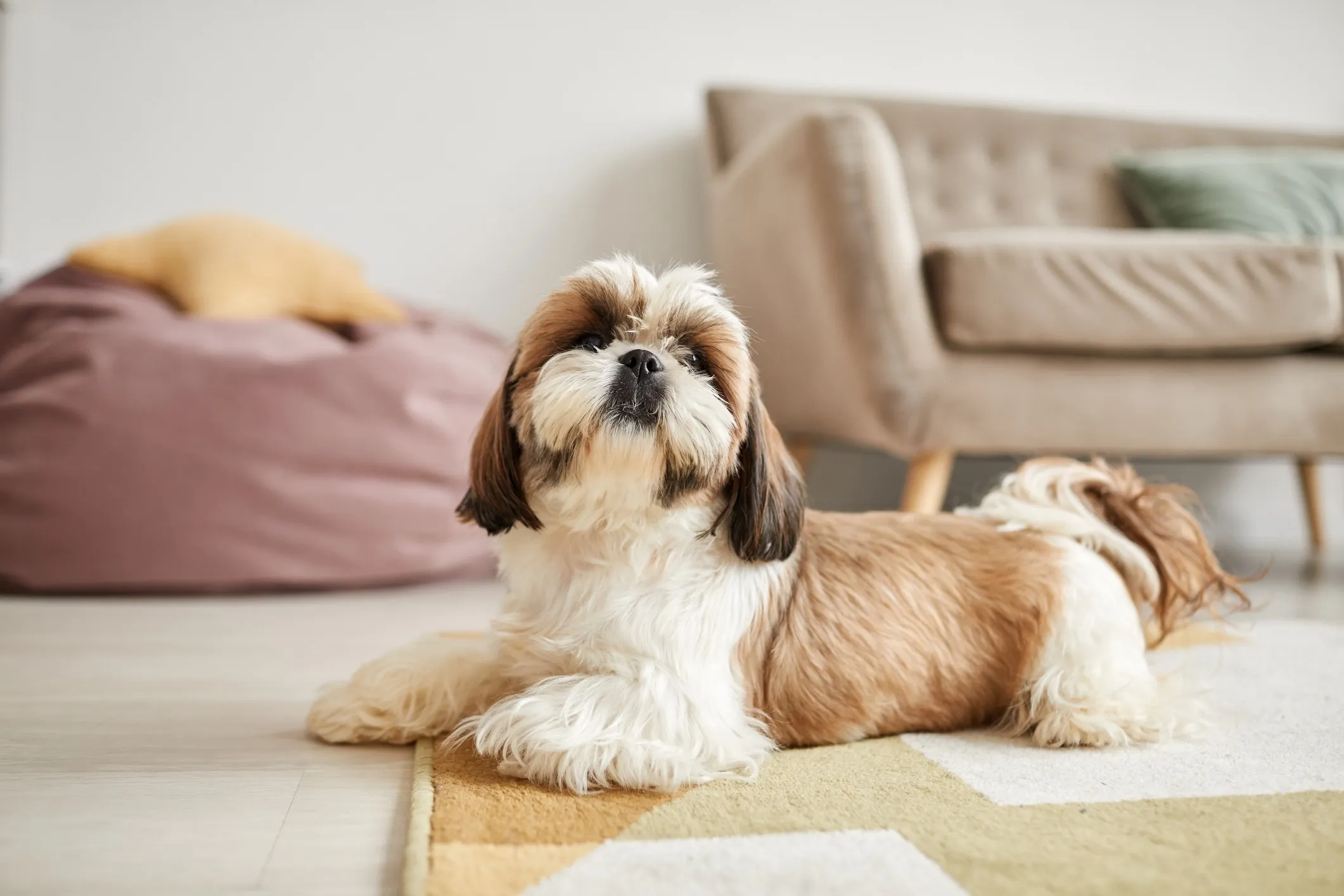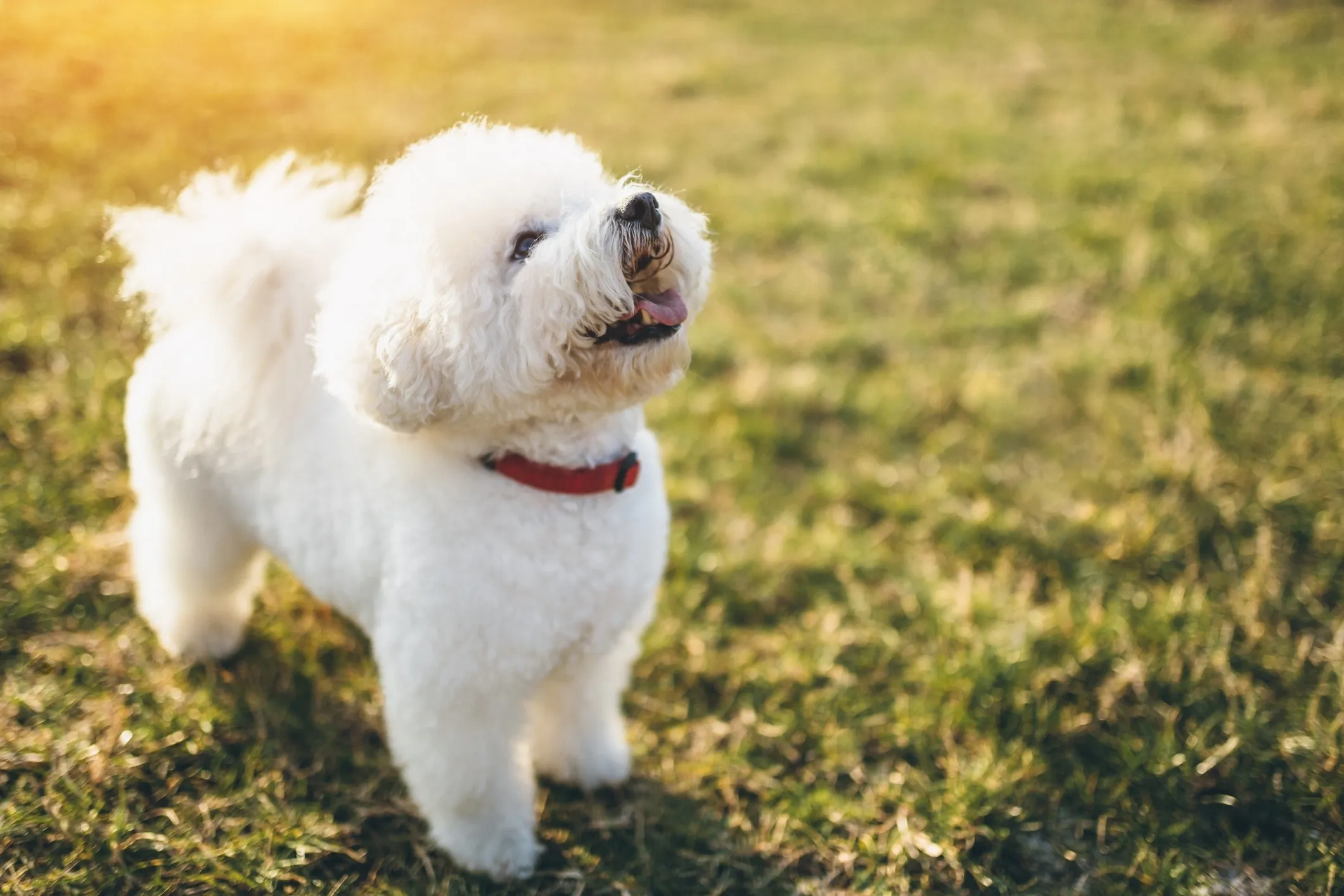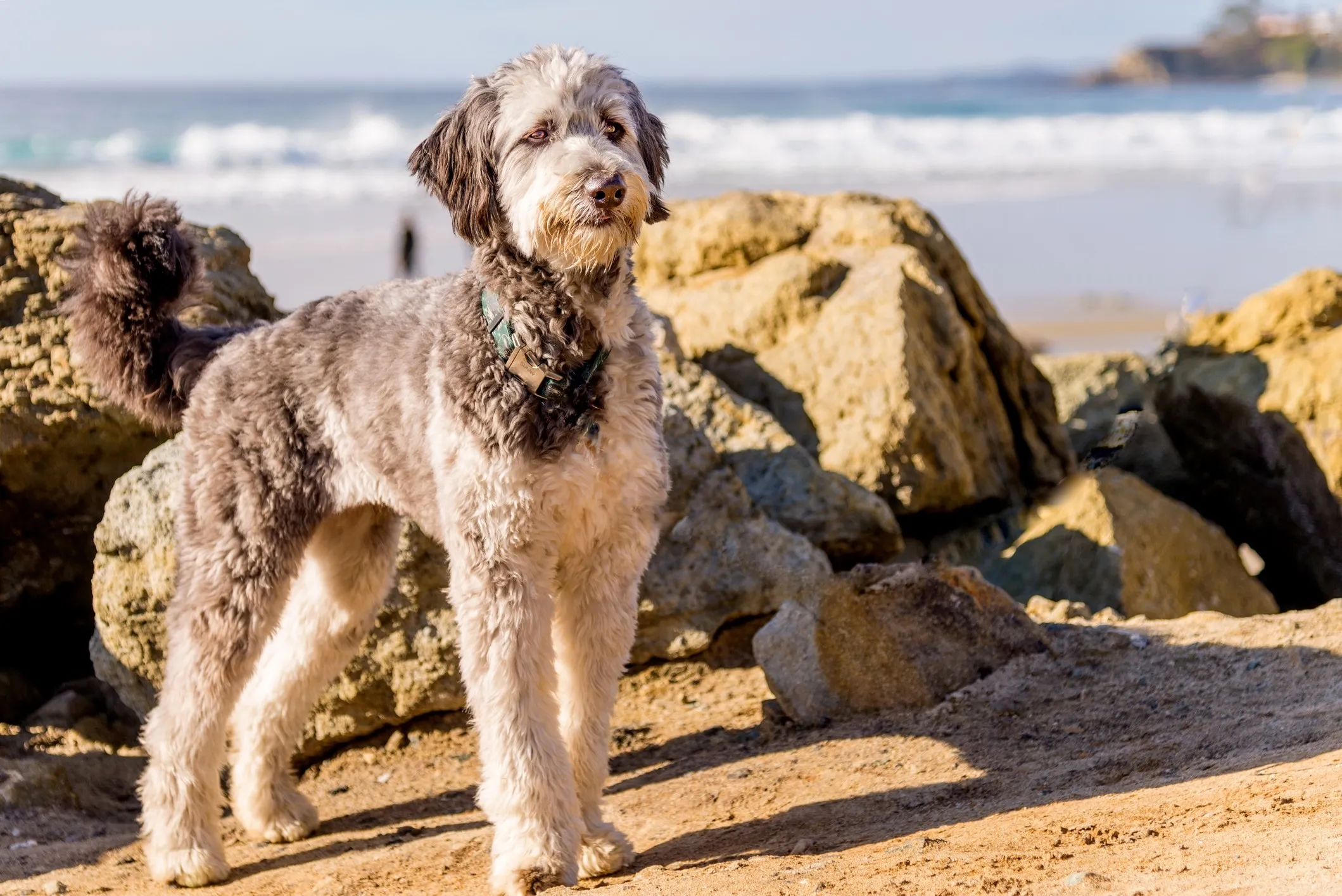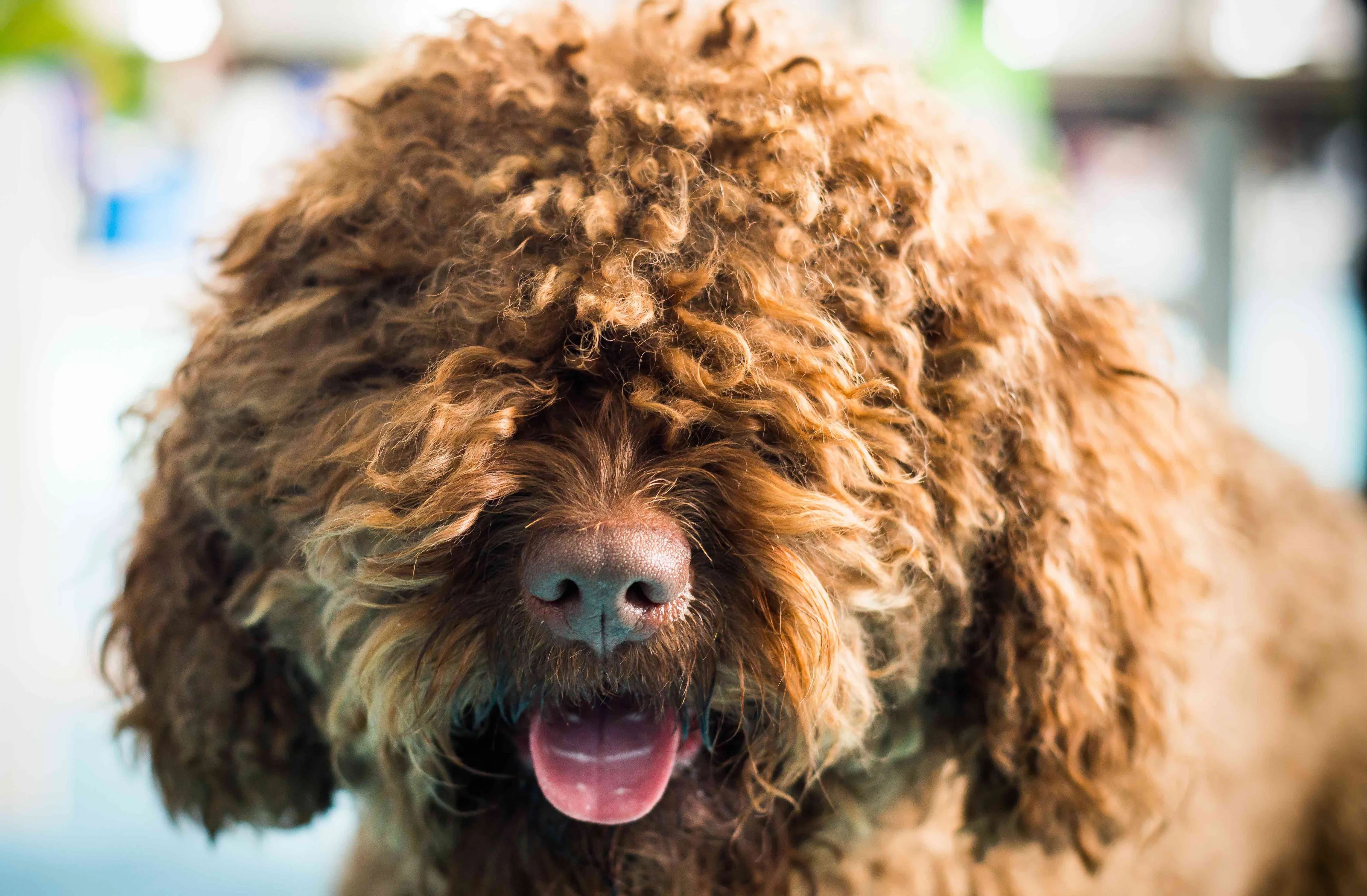Dogs are cherished companions in countless homes, but for many, the joy of pet ownership comes with the challenge of allergies or constant cleaning due to shedding. This often leads people to seek out dog breeds that don’t shed, or at least shed minimally. While no dog is entirely “non-shedding” or 100% allergen-free, certain breeds produce significantly less dander and hair, making them a more suitable choice for individuals sensitive to pet allergens or those simply looking for a cleaner home environment. Understanding which breeds fall into this category can help you find your perfect furry friend. list of dogs that don t shed hair
It’s important to recognize that dog allergies are typically triggered by dander (flakes of dead skin), saliva, and urine, rather than just the hair itself. However, less shedding often means less dander distributed around the home. Therefore, breeds known for their low-shedding coats are frequently referred to as “hypoallergenic.” These dogs require diligent grooming to prevent matting and keep their coats healthy, which also contributes to minimizing the release of allergens. If you’re looking for a companion that won’t leave a trail of fur everywhere, this comprehensive guide to dog breeds that don’t shed is for you.
Understanding Low-Shedding Dog Breeds
While the term “hypoallergenic” is commonly used, it’s crucial to understand its true meaning in the context of dog breeds. All dogs produce allergens to some degree. However, dog breeds that are considered low-shedding typically have coats that trap loose hair and dander, preventing it from dispersing into the environment as much as high-shedding breeds. This characteristic is often what makes them a better fit for people with allergies. Even so, individuals with severe allergies should spend time with a specific breed before bringing one home to ensure compatibility and minimize allergic reactions such as coughing, itching, or wheezing. These breeds often require regular grooming to manage their unique coats.
Top Dog Breeds That Don’t Shed
Here’s a list of some of the best dog breeds known for their minimal shedding, making them ideal for individuals seeking a cleaner home and a companion with a reduced impact on allergies.
1. Poodle
Poodles are renowned for their non-shedding, curly coats and exceptional intelligence. Available in Standard, Miniature, and Toy sizes, these elegant dogs were originally bred for hunting and make excellent family pets. Their distinctive curly hair traps loose fur, preventing it from falling out, which is why they are frequently highlighted in any [list of dog breeds that don’t shed]. Poodles require consistent brushing to prevent their curls from becoming tangled and matted, ensuring their coat remains healthy and allergen-minimal.
2. Yorkshire Terrier
These small, spirited dogs are adored for their spunky personalities and long, silky, low-shedding coats that resemble human hair. Yorkies adapt well to various living environments, from spacious homes to cozy apartments, provided they receive ample attention and mental stimulation. Their fine hair needs daily brushing to avoid tangles and maintain its beautiful sheen, making them a popular choice among those seeking a dog that doesn’t shed excessively.
3. Shih Tzu
The Shih Tzu is an ancient companion breed celebrated for its luxurious, flowing coat and friendly demeanor. This small, low-shedding dog is known for being affectionate and outgoing. However, their brachycephalic (flat) face can make them susceptible to certain health issues, including breathing problems, overheating, and tear stains. Regular grooming is essential for their thick coat, and consistent eye cleaning can help manage tear stains, ensuring their comfort and health.
 brown and white shih tzu lying on a living room floor
brown and white shih tzu lying on a living room floor
4. Miniature Schnauzer
The Miniature Schnauzer is the smallest of the three Schnauzer breeds, typically weighing between 10–20 pounds and standing no more than 14 inches tall. These smart and adaptable dogs possess a wiry, low-shedding coat that fits well into diverse living situations. They are energetic and require at least an hour of exercise daily to stay happy and well-behaved. Their distinctive facial hair, including eyebrows and a beard, adds to their charming and intelligent appearance.
5. Standard Schnauzer
The Standard Schnauzer shares many desirable traits with its Miniature counterpart but in a slightly larger package, often weighing up to 45 pounds. Known for their robust build and loyal nature, these dogs also boast a wiry, low-shedding coat. They thrive on activity and love engaging in long walks, games of fetch, and solving puzzle toys. Their energetic disposition and minimal shedding make them an excellent choice for active families seeking a dog that doesn’t leave much fur behind.
6. Giant Schnauzer
As one of the largest dog breeds that don’t shed, Giant Schnauzers can reach over 27 inches in height and weigh up to 85 pounds. These powerful and intelligent dogs require substantial exercise to maintain their well-being, including extensive walks, runs, and hikes. Their dense, wiry coat, similar to other Schnauzers, is low-shedding, but it needs regular grooming to keep it in optimal condition. The Giant Schnauzer is an ideal companion for experienced owners who can provide consistent training and a demanding exercise routine. list of big dogs that dont shed
7. Bichon Frise
The Bichon Frise is a small, playful, and affectionate dog known for its characteristic curly, cotton-ball-like coat that rarely sheds. These highly intelligent and trainable pups quickly master basic commands with positive reinforcement and enjoy learning new tricks. Their cheerful disposition and minimal shedding make them a wonderful companion for families, fitting well into various home environments. Regular grooming is crucial to prevent matting of their distinctive white coat.
 white bichon frise dog looking up in the grass
white bichon frise dog looking up in the grass
8. Chinese Crested
The Chinese Crested is a unique small breed, primarily known for its minimal to non-existent shedding. It comes in two varieties: the hairless, with smooth skin and tufts of hair on the head, tail, and paws, and the Powderpuff, which is covered in a long, silky coat. Both varieties are considered low-shedding, making them excellent companions for those sensitive to dander. They are playful, affectionate, and form strong bonds with their families.
9. Portuguese Water Dog
Originally bred to assist fishermen in Portugal, the Portuguese Water Dog is a medium-sized breed with a thick, curly coat that sheds very little. These intelligent, highly trainable, and friendly dogs are known for their high energy levels and love for water activities. Regular exercise, including swimming, is essential to keep them happy and healthy. Their robust, non-shedding coat requires consistent grooming to maintain its condition. dogs that don t shed much medium size
10. Labradoodle
A popular crossbreed between a Labrador Retriever and a Poodle, the Labradoodle was initially developed to be a hypoallergenic service dog. These intelligent, friendly, and gentle dogs make exceptional family pets. Their Poodle lineage contributes to their low-shedding coat, although shedding can vary depending on the dominant genes. Labradoodles are highly trainable and benefit greatly from early socialization and consistent exercise.
11. Goldendoodle
Another beloved “doodle” breed, Goldendoodles are a mix of a Golden Retriever and a Poodle. Like Labradoodles, they are known for their low-shedding coats, friendly nature, and high intelligence. While many exhibit a characteristic golden coat, their appearance can vary widely in color and texture. Regular grooming with a slicker brush is necessary to prevent matting and keep their wavy or curly coats in prime condition.
12. Lagotto Romagnolo
Lagotto Romagnolo dogs were historically bred as water retrievers, and their curly, woolly coats protected them from cold water. While less common, these dogs are excellent low-shedding companions and tend to get along well with children and other pets, making them good family dogs. Their unique coat requires specific grooming to prevent felting and maintain its integrity.
13. Affenpinscher
Affenpinschers are small, charming dogs known for their monkey-like expression and dense, wiry, low-shedding coats. This breed produces fewer allergens than many others, but their coat requires dedicated care, including at-home brushing and a technique called “stripping” (removing hair by the root rather than trimming). They are lively and curious, often described as having a big personality in a small package.
14. Irish Water Spaniel
Friendly, intelligent, and highly trainable, the Irish Water Spaniel is another water dog breed bred for retrieving game. Their thick, liver-colored curly coat is low-shedding but demands regular grooming. With high energy levels, these dogs require ample exercise to remain happy and healthy. Their distinctive topknot and “rat tail” are notable features of this active breed.
15. Aussiedoodle
The Aussiedoodle is a cross between an Australian Shepherd and a Standard or Miniature Poodle, resulting in a very smart and energetic low-shedding dog. Both parent breeds contribute to their intelligence and active nature. Without sufficient exercise and mental stimulation, Aussiedoodles can become destructive. Enrichment toys and consistent activity are crucial to keep these bright dogs happy and well-adjusted.
 standard aussiedoodle dog standing on a beach
standard aussiedoodle dog standing on a beach
16. Bolognese
Originating in Italy, Bolognese dogs are cute, playful, and easygoing pups with long, fluffy white coats that are low-shedding. Despite their sometimes messy appearance, their coats require extensive grooming. They are known for getting along well with children and other pets, and their adaptable nature allows them to thrive in various living situations, making them excellent indoor companions. best indoor dogs that don t shed
17. Maltese
Another small dog breed that doesn’t shed much, the Maltese is famous for its luxurious, flowing white coat. These affectionate and playful companions thrive on interaction with their pet parents. While their long hair demands significant grooming, a shorter “puppy cut” can simplify maintenance. Maltese dogs are a delightful choice for those seeking a devoted, low-shedding lapdog.
18. Soft Coated Wheaten Terrier
The Soft Coated Wheaten Terrier is a medium-sized Irish breed with a silky, incredibly soft coat that sheds minimally. True to their terrier heritage, Wheatens maintain a high energy level throughout their lives, necessitating ample exercise and mental stimulation to ensure good behavior. Their engaging personality and low-shedding coat make them a popular choice for active families.
19. Coton de Tulear
Hailing from Madagascar, the Coton de Tulear is a small, easygoing breed known for its cotton-like, low-shedding coat. Their gentle and good-natured temperament makes them suitable companions for other pets and children, especially when proper introductions are made. Cotons are adaptable and thrive on companionship, making them charming additions to almost any home.
20. Schnoodle
The Schnoodle is a unique “doodle” breed that combines two low-shedding breeds: the Schnauzer and the Poodle. Their coat can be curly or wavy, depending on genetic inheritance, but it is consistently low-shedding. Schnoodles often inherit the intelligence and playfulness of both parents, making them energetic and loving family pets that require regular mental and physical activity.
21. Bedlington Terrier
Often likened to a lamb in appearance, the Bedlington Terrier is a small, curly-haired breed recognized by its distinctive topknot and minimal shedding. These dogs are deeply devoted to their human companions and can be prone to separation anxiety if left alone for extended periods. Their affectionate nature and unique look make them a captivating, low-shedding pet.
22. Xoloitzcuintli (Mexican Hairless Dog)
One of the oldest and rarest breeds, the Xoloitzcuintli, or Mexican Hairless Dog, is inherently low-shedding due to its often hairless body. This breed comes in three sizes (toy, miniature, and standard) and can also have a short, fine coat. Both variations are considered low-shedding. Xolos are known for their calm, vigilant, and loyal demeanor, making them excellent companions.
23. Whoodle
A Whoodle is the result of crossing a Soft-Coated Wheaten Terrier with a Poodle. This friendly dog inherits the low-shedding qualities of both parent breeds, producing a coat that sheds very little. Whoodles are intelligent and affectionate, making them wonderful family dogs that thrive on interaction and play. Their soft, wavy coat requires regular grooming to prevent tangles.
24. Bernedoodle
Bernedoodles are a crossbreed of a Bernese Mountain Dog and a Poodle. These large, gentle, and affectionate dogs are a popular choice for families, especially those with children and other pets, thanks to their friendly nature and low-shedding coats. They require plenty of exercise to stay active and healthy, blending the best traits of both robust parent breeds.
25. Shorkie
The Shorkie is a delightful mixed breed combining the Shih Tzu and Yorkshire Terrier, both known for their low-shedding qualities. These small, playful, and friendly dogs embody the best characteristics of their parent breeds. Like most low-shedding dogs, Shorkies benefit from a regular grooming routine to maintain the health and appearance of their lovely coats. best breed of dog that doesn t shed
26. Afghan Hound
Afghan Hounds are striking dogs, famed for their long, flowing coats and slender, aristocratic builds. While their coat is long, it is considered low-shedding compared to many other long-haired breeds, requiring extensive grooming to prevent matting. These pups are built for speed and possess a loving nature towards their families, though they can be reserved with strangers. Early and consistent socialization is key for this breed.
27. Barbet
The Barbet, pronounced “bar-bay,” is a cheerful dog with a shaggy, woolly, and low-shedding coat. The breed’s name comes from the French word barbe, meaning “beard,” a nod to their characteristic hairy chin. These large dogs adore swimming, a passion well-suited by their protective curly coats. To keep a Barbet’s coat in good condition, especially after water activities, regular brushing with a slicker or pin brush is recommended.
 close-up of a curly red barbet dog face
close-up of a curly red barbet dog face
28. Shih-Poo
The Shih-Poo is a charming mixed breed, combining the Shih Tzu and typically a Toy Poodle. This small, low-shedding dog is adaptable and can thrive in almost any living situation, provided they receive about 30 minutes of daily exercise and regular brushing sessions. They inherit the friendly disposition and intelligence of both parent breeds, making them loving and playful companions.
29. Peruvian Inca Orchid
Peruvian Inca Orchids are a rare and ancient breed, primarily recognized for their nearly hairless bodies, which naturally makes them low-shedding. Available in small, medium, and large sizes, they are the national dog of Peru. These dogs are typically calm, protective, and affectionate with their families, offering a truly unique companionship experience for those seeking a dog that doesn’t shed.
30. Malshi
A cross between the Maltese and Shih Tzu, the Malshi is a happy, small, and low-shedding dog. They thrive on close companionship and develop strong bonds with their favorite humans. Their endearing personality combined with minimal shedding makes them an excellent choice for individuals or families looking for an affectionate and manageable companion. Regular grooming is essential for their soft, often fluffy coat.
Tips for Living With a Low-Shedding Dog
While choosing a dog breed that doesn’t shed can significantly reduce allergens and loose hair in your home, it’s still crucial to implement certain practices to maintain a clean and allergy-friendly environment. Pet parents should be aware of a few key aspects before bringing home one of these wonderful companions.
Keep Up With Grooming
Even low-shedding dogs require consistent grooming to manage their coats and minimize dander. Their coats, whether curly, wiry, or silky, tend to trap dead hair and dander, necessitating regular brushing to remove it. Ideally, dogs should be groomed weekly, and bathed every four to six weeks. Using specialized shampoos, such as dander-reducing formulas, can further help control allergens. Many of these breeds also benefit from regular professional trimming or hand-stripping, so factor this into your budget or learn to do it yourself at home.
Maintain a Clean House
To further minimize allergens, maintaining a clean home is vital. Regular vacuuming, dusting, and washing of bedding will help reduce any pet dander that inevitably settles. Using air purifiers and ensuring good ventilation can also significantly decrease airborne allergens, creating a more comfortable living space for everyone. Focus on areas where your dog spends the most time, such as beds, carpets, and furniture.
Talk to Your Doctor
If you have allergies, consulting with your healthcare provider is paramount to developing an effective allergy management plan. There are various treatments available, including medications, nasal sprays, and injections, which can help control allergic reactions. Additionally, it’s important to avoid direct contact with a dog’s saliva or urine, as these can also trigger allergic responses. While a low-shedding dog can greatly improve the quality of life for individuals with allergies, professional medical advice offers the best approach to managing your specific condition.
Bringing a low-shedding dog into your home can be a fantastic way to enjoy the companionship of a canine friend without the constant worry of excessive shedding or severe allergic reactions. These breeds offer the joy of pet parenthood, allowing individuals with sensitivities to experience the unconditional love and benefits that dogs bring to our lives.
